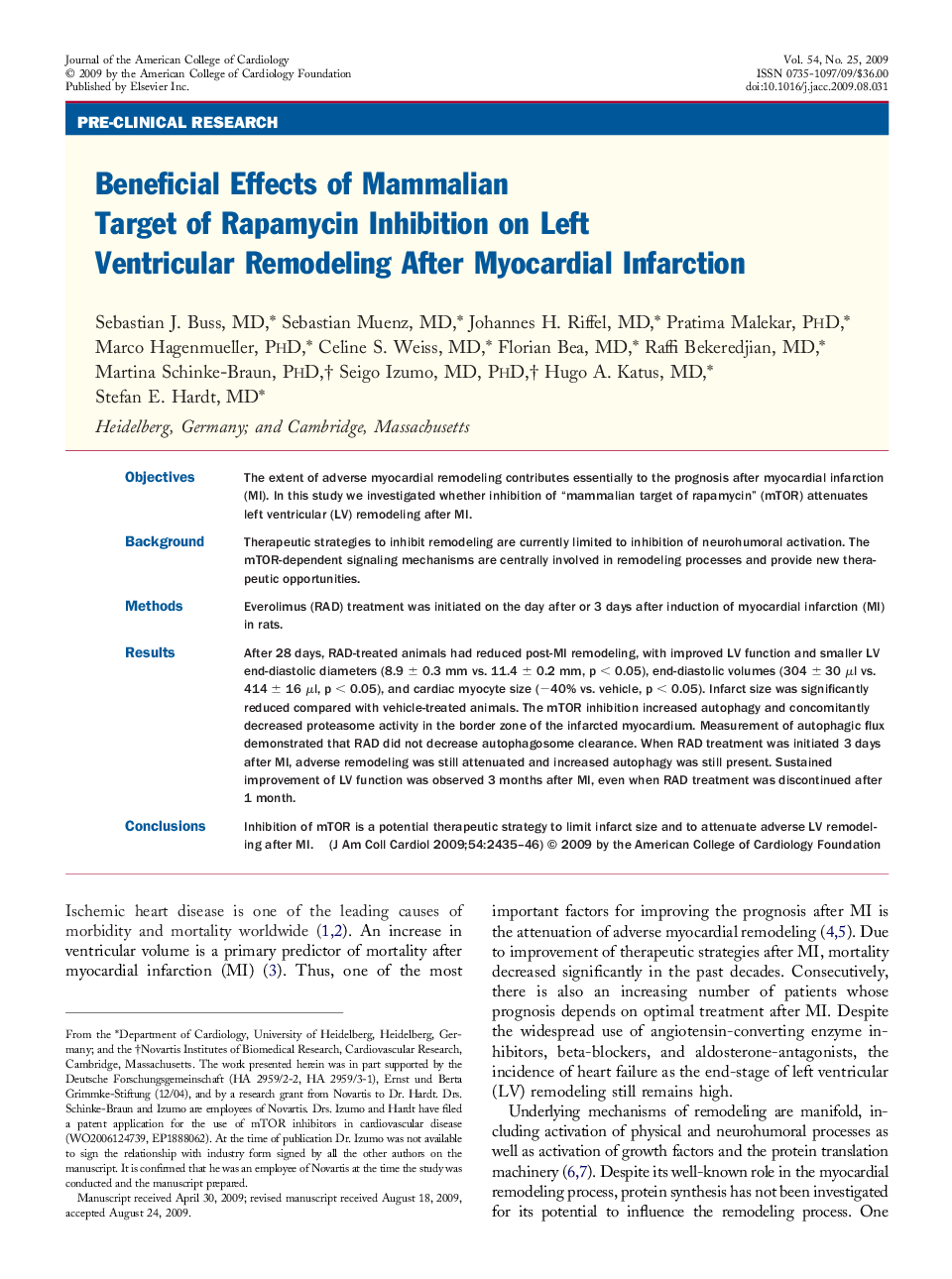| Article ID | Journal | Published Year | Pages | File Type |
|---|---|---|---|---|
| 2949053 | Journal of the American College of Cardiology | 2009 | 12 Pages |
ObjectivesThe extent of adverse myocardial remodeling contributes essentially to the prognosis after myocardial infarction (MI). In this study we investigated whether inhibition of “mammalian target of rapamycin” (mTOR) attenuates left ventricular (LV) remodeling after MI.BackgroundTherapeutic strategies to inhibit remodeling are currently limited to inhibition of neurohumoral activation. The mTOR-dependent signaling mechanisms are centrally involved in remodeling processes and provide new therapeutic opportunities.MethodsEverolimus (RAD) treatment was initiated on the day after or 3 days after induction of myocardial infarction (MI) in rats.ResultsAfter 28 days, RAD-treated animals had reduced post-MI remodeling, with improved LV function and smaller LV end-diastolic diameters (8.9 ± 0.3 mm vs. 11.4 ± 0.2 mm, p < 0.05), end-diastolic volumes (304 ± 30 μl vs. 414 ± 16 μl, p < 0.05), and cardiac myocyte size (−40% vs. vehicle, p < 0.05). Infarct size was significantly reduced compared with vehicle-treated animals. The mTOR inhibition increased autophagy and concomitantly decreased proteasome activity in the border zone of the infarcted myocardium. Measurement of autophagic flux demonstrated that RAD did not decrease autophagosome clearance. When RAD treatment was initiated 3 days after MI, adverse remodeling was still attenuated and increased autophagy was still present. Sustained improvement of LV function was observed 3 months after MI, even when RAD treatment was discontinued after 1 month.ConclusionsInhibition of mTOR is a potential therapeutic strategy to limit infarct size and to attenuate adverse LV remodeling after MI.
